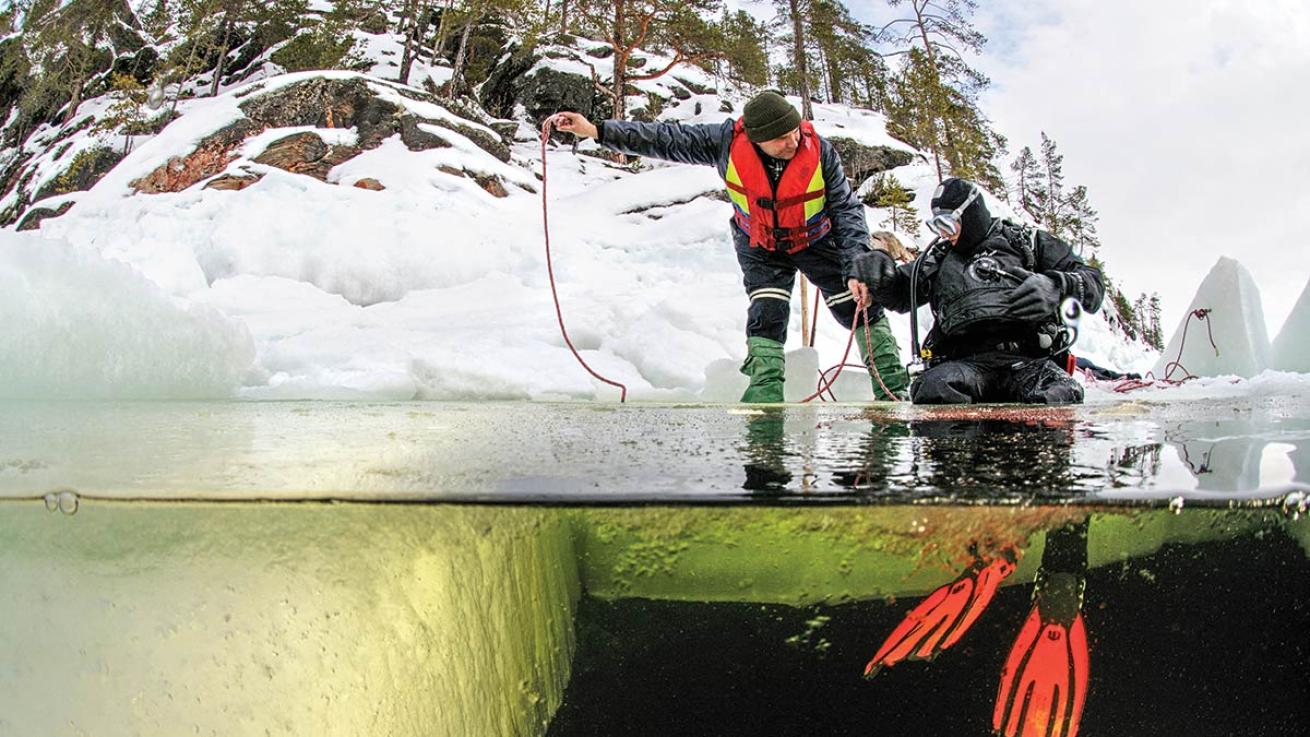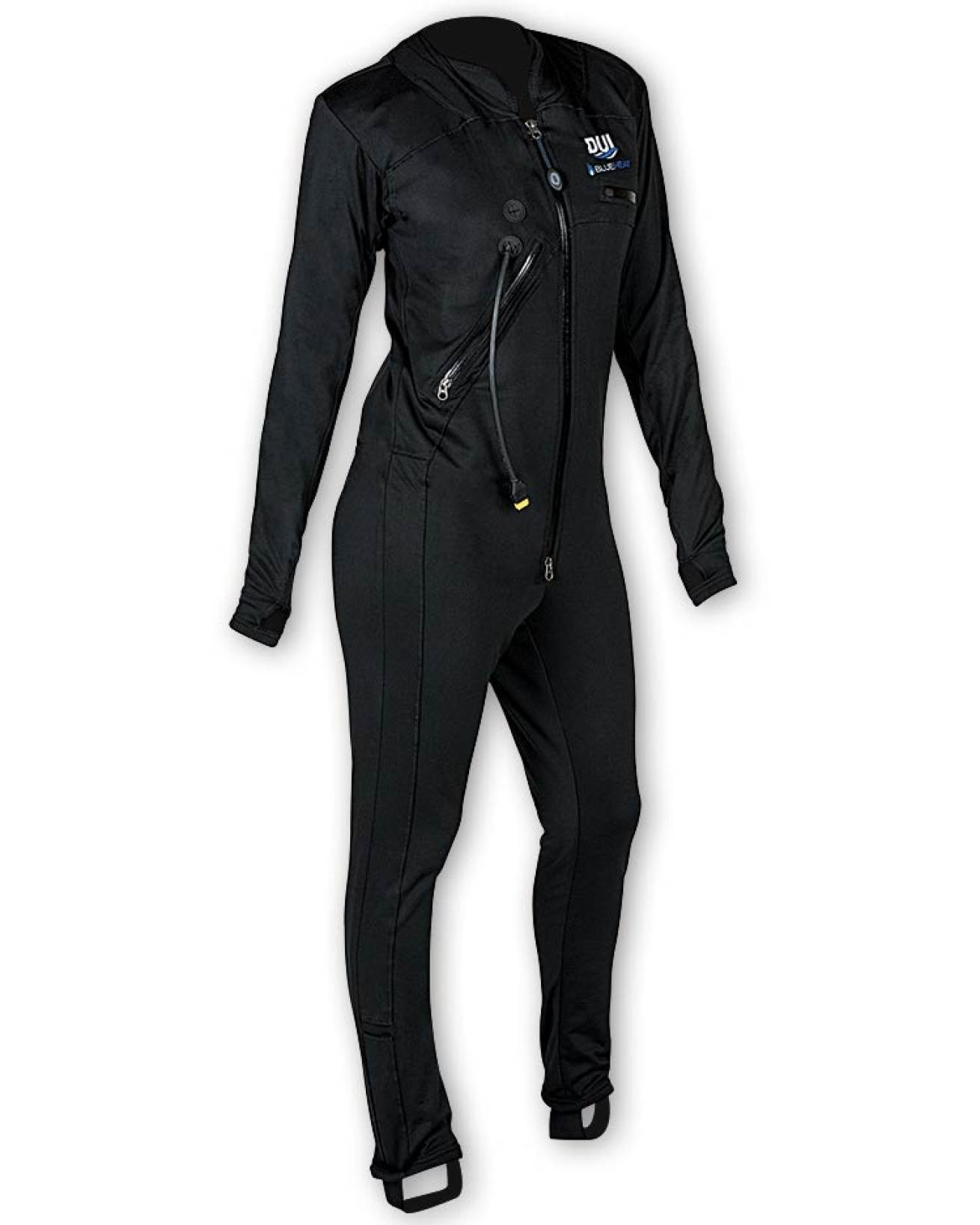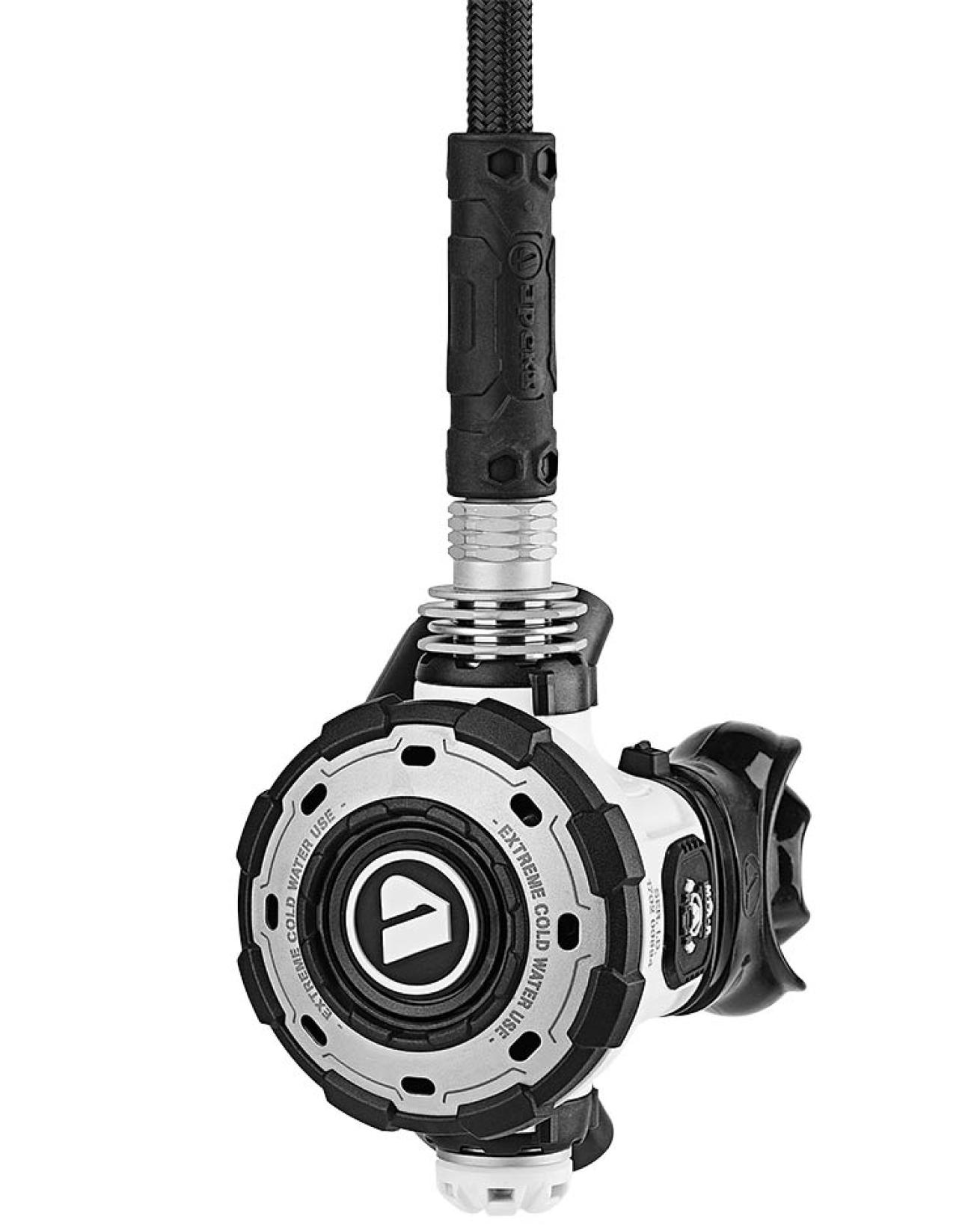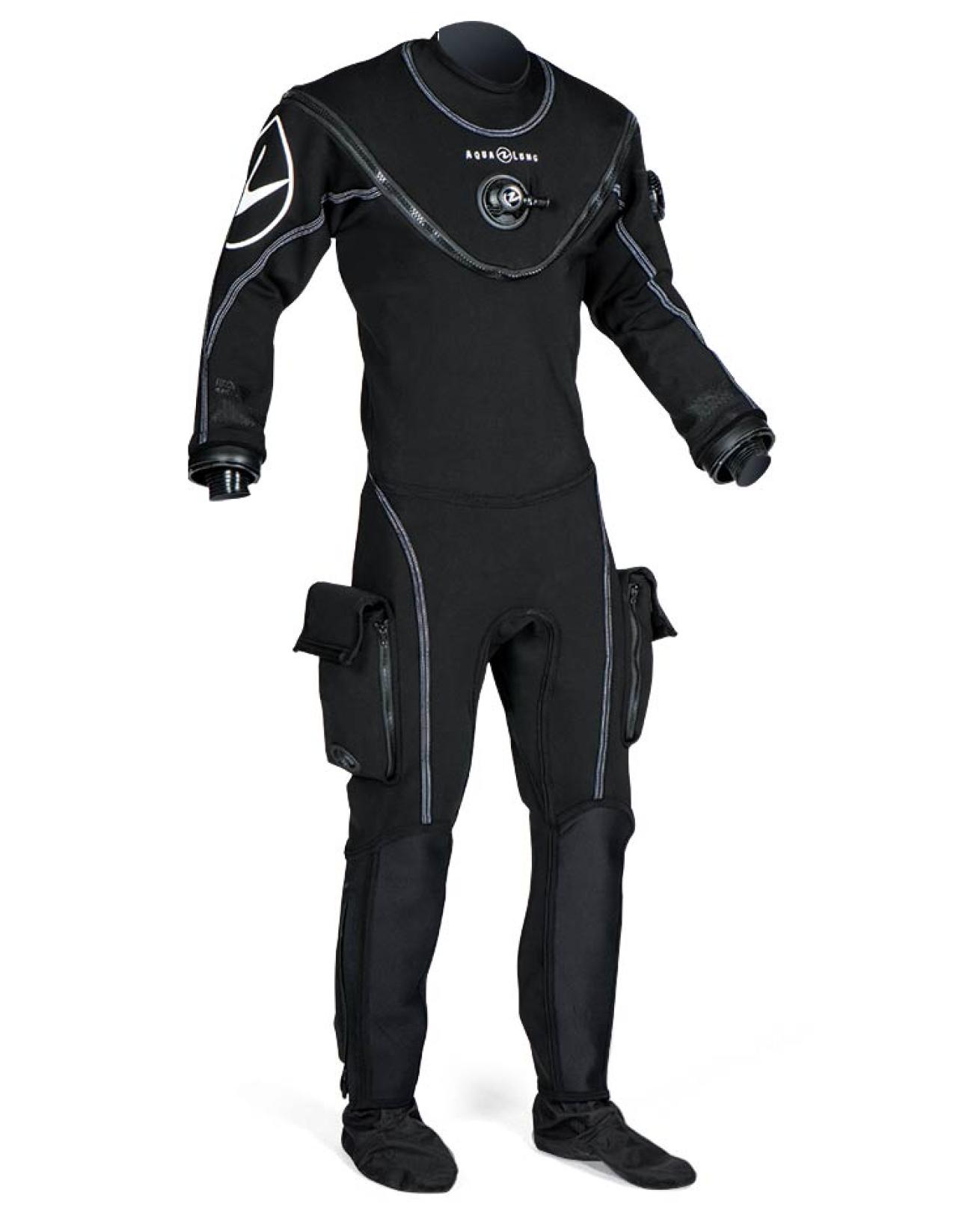How to Prepare for Cold-Water Diving

Wolfgang Poelzer/BiosphotoIn the face of danger, why do so many divers brave cold water on a regular basis?
Cold hurts. Even the toughest divers can’t argue against its bone-chilling power. The cold does crazy things to our bodies: Blood pressure rises, arteries tighten, and the heart races. We gasp for air — hyperventilation can occur in as little as five minutes. As the body loses the ability to pump blood to its extremities, limbs become too heavy to move, the brain clouds, and vital organs shut down. That’s when things get grim.
In the face of all these dangers, why do so many divers brave cold water on a regular basis? From the preserved shipwrecks of the Great Lakes to the critter-filled currents of British Columbia, the kelp forests of California, the wreck graveyards of Scotland’s Scapa Flow and the icebergs of Antarctica, some of the coldest aquatic environments on the planet harbor some of the most amazing sights you’ll ever experience. For many advanced dive travelers, the cold is holding.
“Most of my favorite dives are in cold water,” says Becky Kagan Schott, an Emmy-winning underwater videographer and technical instructor who considers “cold” any temperature from 28 to 40 degrees F. “I always joke with people, ‘If it’s not frozen solid, it’s warm.’ ”
Schott’s job takes her to exotic locations around the world — the colder the better. “For marine life, I love British Columbia — Vancouver Island, specifically — because you’ve got sea lions, giant octopuses and, honestly, some of the most colorful reefs I’ve ever seen,” she says. “And I’m a big fan of the Great Lakes because the cold, fresh water preserves wooden shipwrecks for hundreds of years — something you wouldn’t normally see in the ocean.”
Beyond the big attractions, Schott also counts the challenge of overcoming a harsh environment among the things that draw her to cold water. Not to mention the lack of crowds.

Carrie GarciaDUI Blueheat; liner $999, smart battery system kit $1,799
Like an electric blanket for your drysuit, DUI’s undergarment uses four strategically placed internal heating pads to warm the torso with variable settings. The 6-volt system is designed to depower in the event of flooding.
“Not many people want to dive in cold water, so it’s nice to see places that are less traveled,” she says. “But I think some people are more exothermic individuals. I’m a small person, but if I’m dressed properly, I just don’t get that cold. Sometimes it’s just in your physiology.”
So, besides a heat-generating superpower, what are her secrets for enjoying the cold?
Dress for success
When that sucker punch of cold water hits you in the face, most divers wish for a warm hug from their mother. If you have the proper exposure protection, your chance of enjoyment skyrockets.
“If you’re not dressed properly, diving in cold water is simply dangerous,” Schott says. “If you’re using the right exposure protection, it can be pleasant, like going outside in the wintertime to play in the snow.”
Thankfully, there’s a wide variety of options for suits both wet and dry, built with next-level materials and technology, that are warmer, more flexible and more durable than at any time in dive history. Investing in the best equipment you can afford will not only enhance your temperature range and safety, but also your experience. A 7 mm semidry wetsuit with a chest zip and an integrated hood, or a tough trilaminate drysuit with a telescoping torso and silky silicone seals — plus the right accessories, such as a heated undergarment or gloves — can make you feel like a polar bear frolicking among ice floes.
“Make sure you’ve got a warm hood,” Schott says. “A very thick hood can give you jaw fatigue, but a thinner hood that has a nice liner can keep your head warm and still be flexible.”
In addition to the head, the body loses a lot of heat through the hands and feet, so Schott says to pay extra attention to the extremities.

Jon WhittleApeks MTX-R; $899
Built with an over-molded first-stage endcap, heat exchangers and an environmental diaphragm to help prevent ice buildup, the MTX-R is designed to military specs for both extreme temperatures and breathing performance.
“I hear people say they’re intimidated by dry gloves, whereas I think they are so much better because you have more dexterity,” she says. “And with a little bit of practice, they’re not as difficult to use as you think.”
Besides what you’re wearing, what you’re breathing from matters in cold water. Life support is susceptible to freezing in extreme environments, so consider a regulator designed to handle low temperatures.
“Depending on the water temperature, you want to use a diaphragm regulator or something that is suited for cold water so it doesn’t free-flow or leak,” Schott says. “As an alternative, technicians can detune a regulator and lower the intermediate pressure, so that maybe they’re not as easy to breathe from, but they won’t free-flow as easily in cold water.”
In the end, there’s no substitute for firsthand equipment knowledge.
“Talk to divers who are experienced in cold water to find out what kind of equipment might be best suited for those types of environments,” she says. “It’s all about finding what works best for you.”
Prepare the body, the mind and the plan
While gear is key to any type of diving, your most important equipment is your body and mind — and both need special preparation for cold-water diving.
“I remember being intimidated for years before really getting into cold-water diving,” Schott says. “The best thing to do is to take baby steps. Start by doing short dives, just to get used to what it feels like and not push the limits too far.”
Developing confidence gradually by easing into the process of cold-water diving will help you better anticipate and mentally deal with the harmful effects of extreme temperatures. In turn, you’re likely to be relying on cold-water gear that you’re also not used to, so it’s a good idea to focus some attention on the added challenges that thick wetsuits, drysuits, gloves and other essential gear present during your training dives.

Zach StovallAqua Lung Fusion Bullet with Aircore; $2,349-$2,449
Aqua Lung’s top-of-the-line dual-layer drysuit mates a breathable tri-laminate core with a flexible neoprene skin to create a streamlined profile rarely found in the category, offering durability and comfort.
To prepare your body for cold-water immersion, start with the core.
“I want to stay as warm as possible in my core,” Schott says. “Drinking hot liquids is always good, and I usually take a warm shower in the morning just to loosen up my body and my muscles.”
Light stretching and simple cardiovascular warm-ups are also effective in helping your body deal with the added stress of cold water and cumbersome gear. As you adapt your physical regimen, don’t forget to also adjust your dive plan. From air consumption to bottom time, the cold adds fundamental challenges to the physiology of diving.
“You will consume a bit more air in cold water trying to stay warm, or if you’ve got your drysuit hooked up to your tank,” Schott says. “Plus, the cold can compress the air in your cylinder, so you might start with 3,000 psi on the surface, depending on the air temperature, and see it decrease by a couple hundred psi as you descend.”
Abbreviating your bottom time is another important consideration.
“You want to start your ascent before you’re freezing, because if you’re already shaking and your hands are going numb, you’ve started hypothermia — and that’s a really bad sign,” she says. “Just expect that your dive times will be shorter, so if you’re used to doing 60-minute dives, maybe start by cutting that by a third, just to get used to the exposure and see how much your body can really handle."
If all of this risk and added work sounds like a heap of trouble just to go diving, consider the rewards.
“Think about running your hand along the side of a 200-foot iceberg in the middle of remote Antarctica,” Schott says. “When the penguins and seals swim by, you’ll forget about the cold water and start focusing on the life around you, or the shipwrecks that you’re exploring. There’s nothing like it, and it’s worth every single bit of preparation that you have to put into it.”










